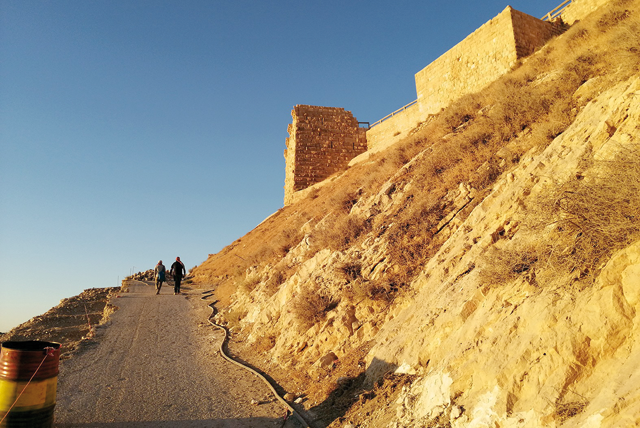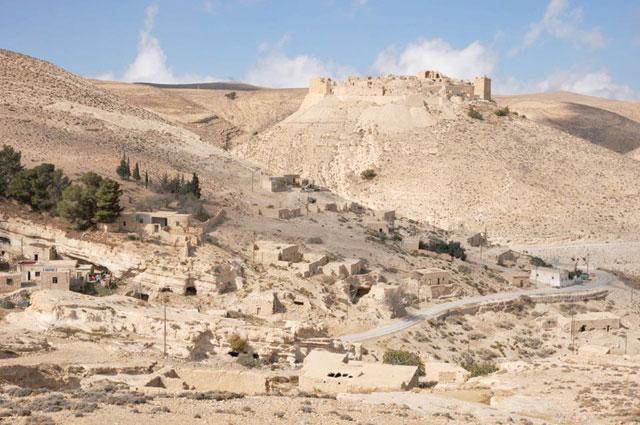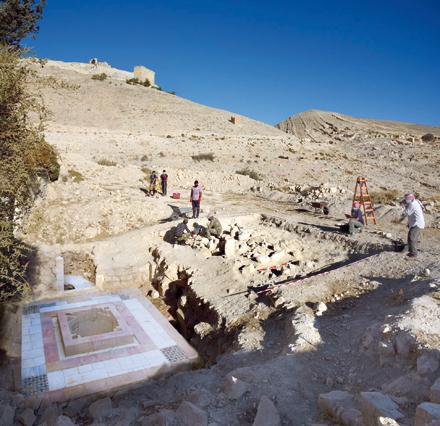You are here
Italian scholar explores Shobak Castle’s path to prosperity
By Saeb Rawashdeh - Sep 17,2022 - Last updated at Sep 17,2022

The mediaeval Shobak Castle located some 200km south of Amman (Photo courtesy of Mediaeval Petra-Shobak Project)
AMMAN — With the aim of identifying the urban setting outside the Shobak Castle and its rural resources between 12th and 16th centuries, an Italian scholar has been studying the castle from the classical to the Ottoman period.
“On which infrastructure the castle found its prosperity?” asked Giacomo Ponticelli from Bonn University, during his presentation at the 15th International Conference on the History and Archaeology of Jordan held in Irbid last month
In order to fill the knowledge gap, the transformation of the agricultural production in the vicinity of the Shobak Castle was studied, he said.
“The evidence from the castle and its hinterland was studied by the research team, and it included the identification of some transformation facilities,” he noted.
The presence of a water mill district — six mills with penstock tower located between in Wadi Al Raghayia and Wadi Al Ansur — added to the already ascertained olive oil soap production, enriching the interest for agricultural production at Shobak, he said.
This appears to be consistent with the ‘urban’ turn the castle underwent during the Ayyubid and Mamluk periods, Ponticelli said.
Shobak and Wadi Musa were well-established agricultural areas before the arrival of Crusaders, Ponticelli said, noting that chroniclers described olive orchards and vineyards in its vicinity.
“During Ayyubid time [1171-1260], the investment in the agriculture of Shobak became more tangible,” the scholar said, adding that the town had abundance of springs and gardens, and the economic prosperity continued in the Mamluk period [1250-1517], particularly in the 14th century where Shobak and Karak were trade centres connected to Damascus and Cairo.
Besides water mills, Shobak had many olive oil mills which contributed to its economic sustainability. It was connected with production of olive oil soap bars that were exported to bigger commercial centres in the region, he said.
“The Hospitallers Chapel in the castle was turned into a soap manufacturing site during the Mamluk reign,” Ponticelli said, adding that a big olive press was also found five kilometres from the castle.
According to the early 16th century Ottoman statistics, some 13 water mills were present in and around Shobak, he said, adding that due to the numerous water mills and olive presses, the settlement expanded far from the protective walls of the castle in the 13th century, and continued to be involved in Middle Eastern trade long into the Ottoman rule.
Related Articles
AMMAN — Shobak Castle, originally built in 1115 by King Baldwin I, was a significant Crusader stronghold strategically positioned to control
AMMAN — Besides its military role, the Shobak Castle used to stand as an important commercial centre during the Ayyubid and Mamluk periods,
IRBID — The findings of the Italian archaeological mission in Jordan were highlighted at the 15th International Conference on the History an














